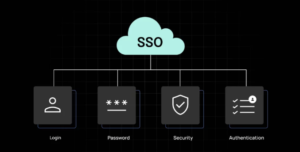
The universalisation of elementary education is a transformative mission aimed at providing free and compulsory education to every child, irrespective of caste, gender, religion, or socioeconomic status. In today’s knowledge-driven society, it is not just a legal right but a critical foundation for a nation’s social and economic development. This mission ensures that every child between the ages of 6 to 14 receives quality elementary education without discrimination or barriers.
Governments, educators, and policymakers around the world recognize the universalisation of elementary education as a cornerstone for achieving the Sustainable Development Goals (SDGs). Education empowers individuals, strengthens communities, and enhances national growth. This article explores the concept in detail—its significance, implementation strategies, major challenges, key policies, and future direction—with a creative yet informative approach.
Understanding the Universalisation of Elementary Education
The term universalisation of elementary education refers to the process of making elementary education accessible, available, and compulsory for all children, typically between the ages of 6 to 14. This concept emphasizes that education should not only be free of cost but also equal in quality and reach. It focuses on three key components: universal access, universal retention, and universal quality education.
Elementary education forms the bedrock of an individual’s learning journey. It is during these formative years that foundational skills such as reading, writing, critical thinking, and basic arithmetic are developed. Universalisation ensures that every child has a fair opportunity to acquire these life-altering skills, laying the groundwork for lifelong learning and development.
Importance and Impact of Universal Elementary Education
The importance of universalisation of elementary education cannot be overstated. It contributes directly to eradicating illiteracy, poverty, and inequality. When children are given equal educational opportunities early in life, they are more likely to become productive citizens, participate in the workforce, and contribute to national growth. Studies have shown that countries with higher elementary education rates experience better economic and health outcomes.
Furthermore, universal education promotes gender equality and social inclusion. In many developing countries, girls, minorities, and children with disabilities face significant barriers to education. Universalisation efforts focus on creating inclusive schools that cater to the diverse needs of all students, promoting harmony, understanding, and mutual respect from a young age.
Government Policies and Programs for Implementation
In India, the universalisation of elementary education has been guided by various government programs and constitutional mandates. The most prominent is the Right to Education Act (RTE) of 2009, which makes education a fundamental right for every child aged 6 to 14. It mandates free and compulsory education and outlines minimum standards for schools.
Another landmark initiative is the Sarva Shiksha Abhiyan (SSA), launched in 2001. This flagship program focused on opening new schools in underserved areas, recruiting teachers, improving infrastructure, and promoting community participation in school management. The more recent Samagra Shiksha Abhiyan, launched in 2018, integrated SSA with secondary and teacher education schemes to offer a holistic approach to school education.
These programs have significantly increased enrollment rates and reduced the number of out-of-school children. They have also enhanced school infrastructure and teacher training across rural and urban regions.
Key Challenges in Achieving Universalisation
Despite considerable progress, the universalisation of elementary education still faces multiple hurdles. One of the most pressing challenges is the quality of education. While access to schools has improved, the learning outcomes in many government schools remain alarmingly low. Many children in grades 3 to 5 struggle with basic literacy and numeracy skills, pointing to the need for better curriculum planning and teacher training.
Another challenge is dropout rates and irregular attendance, particularly among marginalized groups such as girls, children in remote tribal areas, and those from economically weaker sections. Societal factors like child labor, early marriage, and gender bias continue to hinder consistent school attendance. Moreover, the digital divide exposed during the COVID-19 pandemic underscored the urgent need for technology-integrated learning solutions.
The Future of Elementary Education and the Role of Technology
The future of universalisation of elementary education lies in embracing innovation, inclusivity, and adaptability. EdTech platforms and digital classrooms have emerged as powerful tools to bridge learning gaps and reach underserved areas. Blended learning models, incorporating both in-person and digital education, are being adopted to personalize learning experiences and improve outcomes.
In addition, the integration of life skills, environmental education, and vocational training into elementary curricula can make learning more relevant and engaging. Policymakers and educators must also prioritize mental health, social-emotional learning, and cultural sensitivity to make schools more nurturing and inclusive.
The National Education Policy (NEP) 2020 in India aims to revamp the education system by making it more holistic, child-centric, and flexible. With a focus on foundational literacy and numeracy by 2026-27, NEP underscores the significance of early childhood care and education as a precursor to successful universalisation of elementary education.
Conclusion
The universalisation of elementary education is not just a policy directive; it is a moral imperative and a strategic investment in a nation’s future. By ensuring that every child has access to quality elementary education, societies can break the cycles of poverty, ignorance, and inequality. While challenges persist, the combined efforts of governments, educators, communities, and technology providers can make this vision a reality.
Empowering children through education is the most sustainable path to progress. With continued innovation, inclusive policies, and unwavering commitment, the dream of universal elementary education can be fulfilled—one classroom, one child at a time.
Frequently Asked Questions (FAQs)
1. What is the universalisation of elementary education?
It refers to making free, compulsory, and quality elementary education accessible to all children, typically aged 6–14.
2. Why is universal elementary education important?
It helps eliminate illiteracy, promotes social equity, boosts economic development, and empowers individuals and communities.
3. Which policies support universalisation in India?
Key policies include the Right to Education Act (2009), Sarva Shiksha Abhiyan (SSA), and Samagra Shiksha Abhiyan.
4. What are the main components of universalisation?
The three main components are universal access, universal retention, and universal quality education.
5. What challenges does this mission face?
Major challenges include poor learning outcomes, high dropout rates, inadequate infrastructure, and social barriers.
6. How has the RTE Act impacted elementary education?
It has made education a fundamental right and helped improve school enrollment, infrastructure, and accountability.
7. What role does technology play in universal education?
Technology enhances access to learning, enables personalized education, and supports digital classrooms in remote areas.
8. How does the NEP 2020 support elementary education?
NEP 2020 focuses on foundational learning, inclusive education, early childhood care, and integration of life skills.
9. What is the significance of quality in elementary education?
Quality education ensures that children not only attend school but also learn effectively and develop critical thinking.
10. How can communities help in achieving universalisation?
Communities can support schools through active participation, awareness campaigns, and local resource mobilization.







